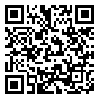دوره 9، شماره 35 - ( فصلنامه علمی پژوهشی رفاه اجتماعی 1388 )
جلد 9 شماره 35 صفحات 219-189 |
برگشت به فهرست نسخه ها
Download citation:
BibTeX | RIS | EndNote | Medlars | ProCite | Reference Manager | RefWorks
Send citation to:



BibTeX | RIS | EndNote | Medlars | ProCite | Reference Manager | RefWorks
Send citation to:
Yazdanpanah M, Raghfar H. (2010). Child Poverty in Iran, 1999-2007. refahj. 9(35), 189-219.
URL: http://refahj.uswr.ac.ir/article-1-549-fa.html
URL: http://refahj.uswr.ac.ir/article-1-549-fa.html
یزدان پناه محدثه، راغفر حسین. محاسبۀ شاخص های فقر کودکان در بین جمعیت روستایی و شهری (1386- 1363) رفاه اجتماعی 1388; 9 (35) :219-189
چکیده: (11911 مشاهده)
Intuition: Poverty reduction should be seen as a part of a wider enterprise to
establish a well-ordered and balanced society. Obviously, this target cannot be
achieved overnight and it requires many different, consistent and harmonious
efforts to attack the causes of inequity and deprivation from different angles. To
guarantee less poverty in future means to tackle child poverty today. Children in
poverty at present guarantee the persistence of poverty in the future, unless they
are the main target of social protection programmes. Hence, the most effective
approach to any poverty reduction effort is to tackle child poverty first.
Malnourishment and under-nourishment, insufficient health care, and poor
schooling, if there is any, are the main causes that breed poverty. Children living
in a poor family have prime candidate potential for becoming the future poor.
The descendants of the poor remain poor because they are deprived from basic
nutrition, health care, and education. This cycle reproduces poverty and the
victims end up in copiously documented ‘poverty traps’.
Iran with young population, almost 25% below the age of 15, should take child
poverty more seriously otherwise the future of the country would be in jeopardy.
This study provides an account of the status of child poverty in Iran. The overall
figure of child poverty is disaggregated into 30 provinces. Uneven development
in different regions of the country is a source of noticeable differences in per
capita income (consumption) in different provinces. Hence, poverty statistics
show a discernible variation in poverty incidence in different areas. High poverty
incidence rate in areas with rich natural resources reveals a basic policy failure
plus the fact that poverty reduction programmes can be successful provided that
there is a comprehensive, participatory and community-based approach to tackle
the problem.
Methodology: In this study micro-data collected through Iran Household Budget
Survey (HBS) over 1999-2007 is used. The HBS was conducted on a provincially representative sample of close to 30,000 households. Absolute
poverty incidence in 30 provinces is calculated and then the ratio of the children
under 16 living in poor households to the total number of children is accounted
for both in rural and urban areas.
Findings: Although, the latest poverty incidence rate in Iran is around %30,
child poverty incidence in some cases is markedly higher. For example poverty
incidence in Sistan and Baluchestan province for the urban and rural areas are
%70 in our sample, in 2007. Nevertheless, overall child poverty incidence in
2007 in the urban and rural areas of the country is %38 and %18, respectively.
The lowest urban child poverty headcount rate of %17 occurs in Mazandaran and
for the rural areas of %18 occurs in Mazandran, too. Child poverty incidence
rates declined during the time frame of the study, while both the rates of poverty
incidence and intensity are higher in the rural areas than the urban ones. The
highest child poverty rate in Iran has been occurred in the eastern part of the
country where was drought stricken region for eight consecutive years. Failure of
the drought relief schemes led to massive migration which itself deepened the
incidence of poverty.
واژههای کلیدی: میزان سرشمار فقر، میزان شدت فقر، میزان شکاف فقر، میزان فقر استانی، میزان فقر کودکان.
| بازنشر اطلاعات | |
 |
این مقاله تحت شرایط Creative Commons Attribution-NonCommercial 4.0 International License قابل بازنشر است. |





